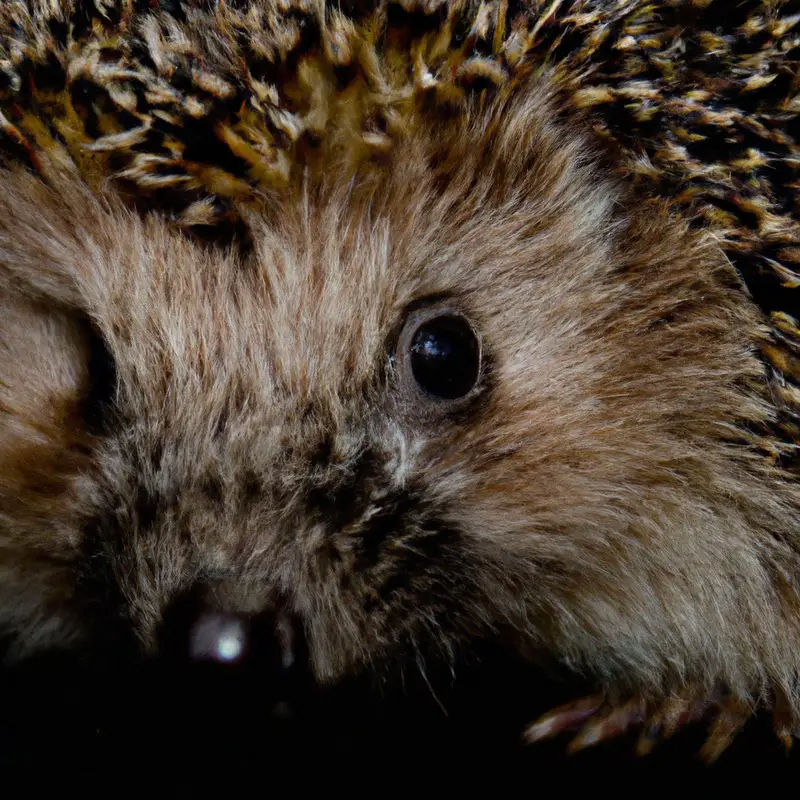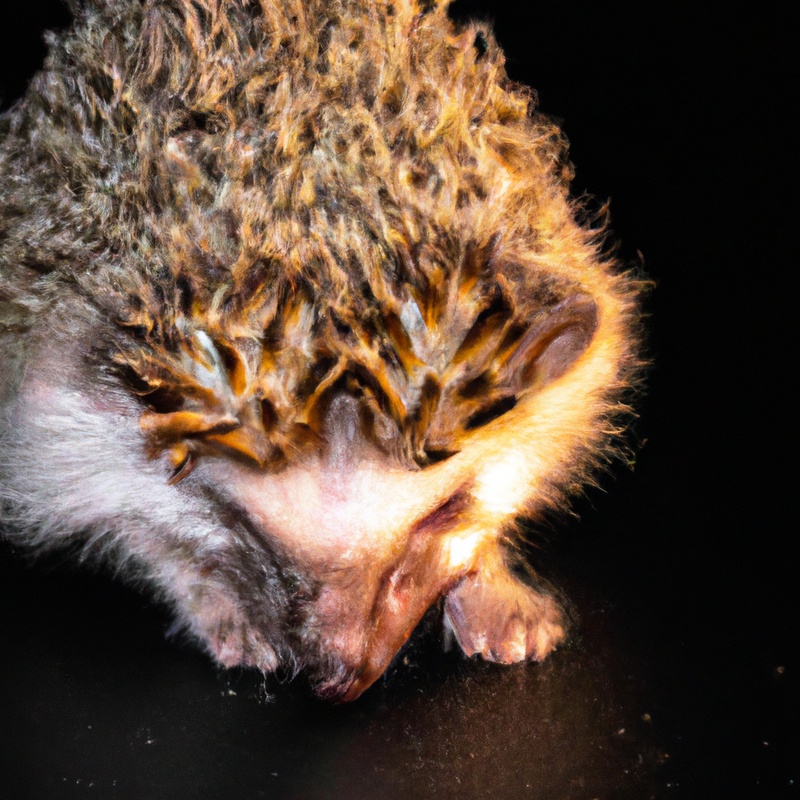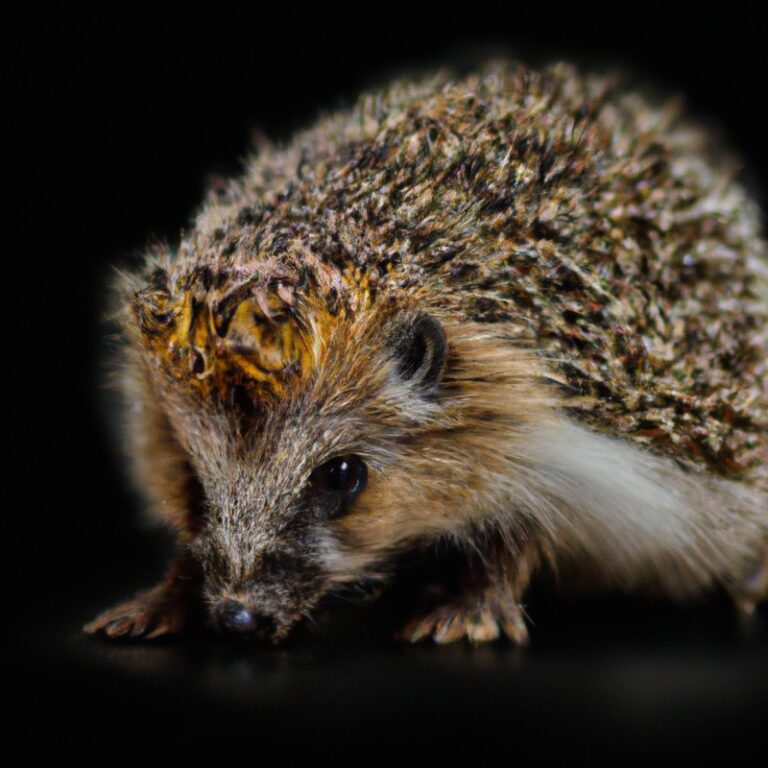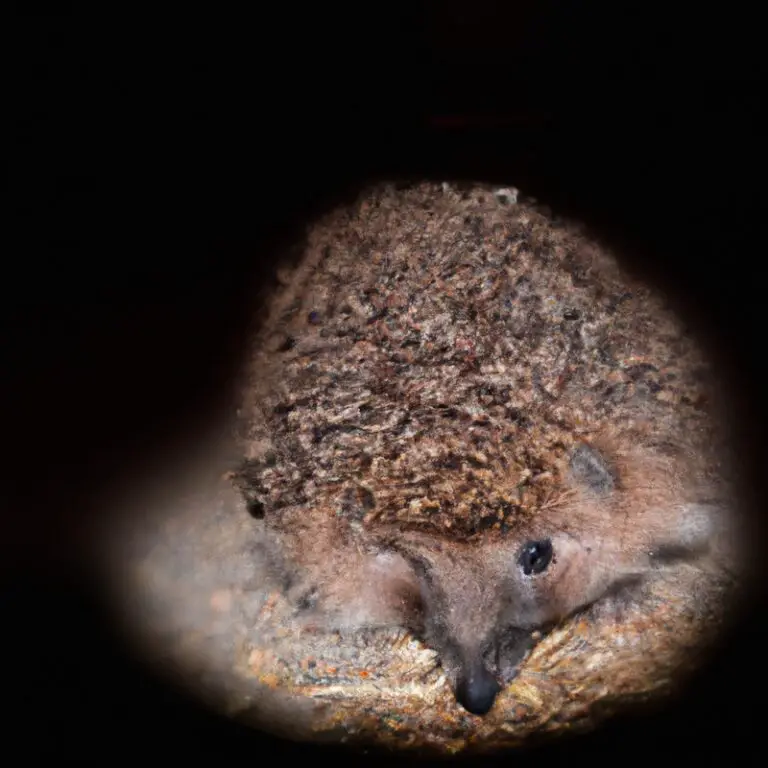How Do Hedgehogs Navigate In The Dark?
Key Takeaways:
- Hedgehogs have a remarkable ability to navigate in the dark using their highly sensitive snouts and whiskers.
- By relying on their acute hearing and sense of smell, hedgehogs can easily detect obstacles and find their way around.
- Hedgehogs use a combination of mental mapping and memory to navigate at night, allowing them to traverse unfamiliar terrain.
- The unique ability of hedgehogs to navigate in the dark is an impressive adaptation that helps them survive and thrive in their nocturnal habitats.
Have you ever wondered how hedgehogs navigate in the dark?
These spiky little creatures, known for their nocturnal habits, seem to effortlessly maneuver through the darkness without stumbling or getting lost.
It’s almost like they have a built-in GPS system! In this article, we’ll explore the fascinating adaptations that enable hedgehogs to navigate in low light conditions.
From their exceptional night vision to their keen sense of smell and hearing, hedgehogs possess a remarkable set of skills that allow them to thrive in the dark.
Get ready to dive into the secret world of hedgehog navigation after sundown!
| Topic | How do hedgehogs navigate in the dark? |
| Introduction | Hedgehogs are nocturnal creatures known for their ability to navigate in the dark. They rely on several remarkable adaptations to find their way around during the night. |
| Senses | Hedgehogs have highly developed senses that help them navigate in the dark:
|
| Vision | Hedgehogs have poor eyesight compared to humans. However, their eyes are adapted for low-light conditions, allowing them to see in the dark to a certain extent. They can detect movement and perceive objects within a short distance. |
| Orientation | Hedgehogs use different orientation techniques to navigate in the dark:
|
| Conclusion | Hedgehogs have evolved a range of sensory adaptations and orientation techniques to navigate effectively in the dark. Their acute senses, along with their ability to detect scent trails and auditory cues, enable them to find their way and survive in their nocturnal habitat. |
The Adaptations of Hedgehogs in the Dark
Hedgehogs have unique adaptations that allow them to navigate in the dark. Despite having poor eyesight, hedgehogs rely on their acute senses of hearing and smell to find their way in the dark.
Brief overview of hedgehogs and their natural habitats
Hedgehogs are small mammals known for their spiky quills and nocturnal behavior.
They are native to Europe, Asia, and Africa, and can also be found in New Zealand.
These adorable creatures are well-adapted to their natural habitats, which include woodlands, grasslands, and gardens.
Hedgehogs are primarily insectivorous, feeding on insects, worms, and other small creatures.
They have keen senses of smell and hearing, enabling them to locate food even in the dark.
Hedgehogs also have excellent camouflage abilities, blending into their surroundings to stay safe from predators.

Explanation of the focus on hedgehog navigation in the dark
Hedgehogs have fascinating adaptations that help them navigate in the dark. One of their main strategies is their exceptional sense of hearing.
With their finely tuned ears, hedgehogs can detect sounds and locate objects in their surroundings, even in complete darkness.
Additionally, their whiskers, also known as vibrissae, are highly sensitive and help them feel and navigate through their environment. These adaptations, combined with their natural instinct and ability to memorize their surroundings, allow hedgehogs to confidently move around in the dark.
Hedgehog Night Vision
Hedgehogs have exceptional night vision, allowing them to navigate in low light conditions with ease. Their specific adaptations enable them to see in the dark effectively.
An introduction to the concept of night vision in animals
Night vision in animals is an incredible adaptation that allows them to see with clarity in low-light conditions.
Unlike humans, who rely on a combination of cones and rods in their eyes to perceive light, animals with night vision possess specialized structures, such as larger pupils, specialized cells called rod cells, and reflective layers behind their retinas.
These adaptations enhance their ability to capture and process the limited available light, enabling them to navigate and hunt efficiently in the dark.
Some examples of animals with exceptional night vision include owls, cats, and the iconic nocturnal creatures, bats.

Explanation of hedgehogs’ ability to see in low light conditions
Hedgehogs have a remarkable ability to see in low light conditions.
This is due to their well-developed night vision.
Their eyes contain a high number of rod cells, which are responsible for detecting light in dim environments.
Additionally, hedgehogs have a layer of tissue called the tapetum lucidum at the back of their eyes.
This tissue reflects light back onto the retina, enhancing their vision in low light.
These adaptations allow hedgehogs to navigate and find food even in complete darkness.
Discussion of the specific adaptations that enable hedgehogs to navigate in the dark
Hedgehogs have several adaptations that enable them to navigate in the dark.
One key adaptation is their heightened sense of hearing, which allows them to detect sounds and movements around them.
They also have well-developed whiskers, or vibrissae, which help them feel their surroundings and navigate through narrow spaces.
In addition, hedgehogs have excellent night vision, thanks to their large, round eyes and a high number of rod cells in their retinas.
These adaptations work together to help hedgehogs effectively navigate and forage for food in the dark.
Hedgehog Sense of Smell
Hedgehogs rely heavily on their sense of smell to navigate and find their way in the dark.
They use scent marking and scent trails to communicate and locate food or potential threats.
Importance of sense of smell for nocturnal animals
Nocturnal animals rely heavily on their sense of smell to navigate their environment and locate food sources in the dark.
- Sense of smell helps them identify prey and avoid predators.
- Many nocturnal animals have keen noses that can detect scents from long distances.
- Their olfactory abilities allow them to follow scent trails, find mates, and mark territories.
- Sense of smell is an essential tool for survival in the dark, where vision is limited.
- Without a strong sense of smell, nocturnal animals would struggle to find resources and navigate their surroundings.
Explanation of how hedgehogs rely on their sense of smell to navigate
Hedgehogs rely on their sense of smell to navigate because it allows them to detect their surroundings and find food. Their noses are highly sensitive and can pick up on scents from a long distance.
By using their sense of smell, hedgehogs can locate potential threats and find shelter.
They can also follow the scent trails left by other hedgehogs, helping them navigate and communicate with each other. Their keen sense of smell is essential for survival in their nocturnal environment.
Hedgehog Hearing
Hedgehog Hearing: How these spiky creatures use sound to navigate, detect predators, and find food.
Overview of hedgehogs’ hearing abilities
Hedgehogs have impressive hearing abilities that help them navigate in the dark.
Their large ears and acute hearing allow them to detect subtle sounds, such as the movement of prey or potential predators.
Hedgehogs can even hear frequencies that are inaudible to humans.
Their ability to rely on sound for navigation is particularly important as they are nocturnal creatures.
This means that they are active during the night when visibility is limited.
By using their keen sense of hearing, hedgehogs can locate objects and identify potential threats or food sources.
In addition to being able to hear well, hedgehogs are also adept at detecting vibrations through the ground.
This allows them to sense the movement of other animals or even the approach of humans.
Overall, hedgehogs’ hearing abilities are a vital sense that enables them to navigate and survive in their nighttime habitat.
Explanation of how hedgehogs use sound cues to navigate
Hedgehogs use sound cues to navigate in the dark by relying on their acute hearing.
They are able to detect and distinguish various sounds in their environment, such as rustling leaves or the movement of other animals.
These sound cues help them locate potential food sources, avoid predators, and navigate through their surroundings.
Hedgehogs have a specialized auditory system that allows them to pick up on subtle sounds and utilize them to safely navigate their environment.
It’s truly fascinating how they rely on their sense of hearing to survive in the darkness!
Discussion of the importance of hearing for hedgehogs in detecting predators and finding food
Hearing is vital for hedgehogs when it comes to detecting predators and finding food.
Their acute hearing allows them to pick up on the slightest sounds, such as the rustling of leaves or the scurrying of small prey.
This helps them stay aware of potential threats and locate their next meal.
Hedgehogs’ keen hearing not only helps them survive in the wild but also enhances their overall ability to navigate their environment and avoid danger.
It plays a crucial role in their day-to-day activities, helping them thrive in their natural habitat.
Hedgehog Whiskers
Hedgehogs use their whiskers to detect and avoid obstacles. Their whiskers are highly sensitive and play a vital role in navigating in the dark.
Explanation of how hedgehogs use their whiskers to detect and avoid obstacles
Hedgehogs use their whiskers to detect and avoid obstacles. These whiskers, called vibrissae, are highly sensitive and help them navigate in the dark.
When a hedgehog encounters an object, its whiskers brush against it, sending signals to the brain.
The brain then processes these signals to determine the object’s size, shape, and proximity. This allows the hedgehog to adjust its movements and avoid collisions.
The whiskers also help the hedgehog locate prey and navigate through narrow spaces.
Overall, the whiskers play a crucial role in the hedgehog’s ability to move around safely and efficiently in low light conditions.
Discussion of the sensitivity and importance of hedgehogs’ whiskers in the dark
Hedgehogs’ whiskers are incredibly sensitive and play a vital role in their navigation in the dark.
These whiskers, also known as vibrissae, are specialized sensory hairs located on their face.
They help hedgehogs detect obstacles, changes in their environment, and even prey.
By brushing against objects, the whiskers send signals to the hedgehog’s brain, providing information about their surroundings.
This allows them to move with precision and avoid potential dangers in low-light conditions.
Hedgehogs heavily rely on their whiskers, making them essential for their survival in the dark.
Frequently Asked Questions (FAQs)
How do hedgehogs find their way back home in the dark?
Hedgehogs have remarkable navigational skills, even in the dark! They rely on a combination of their acute senses and natural instincts to find their way back home. Hedgehogs have excellent hearing, which helps them detect familiar sounds and recognize their way back.
They also have a keen sense of smell, enabling them to follow scent trails and locate their home.
Additionally, hedgehogs use their sharp memory to remember the routes they have taken before, which helps them navigate through the darkness.
Can hedgehogs navigate in complete darkness?
Hedgehogs are remarkably skilled at navigating in the dark.
They have a keen sense of hearing and smell, which helps them detect any obstacles or potential dangers in their path.
Additionally, hedgehogs possess highly sensitive whiskers called vibrissae, which enable them to feel their surroundings and make judgments about their environment.
Although they rely mostly on their senses, hedgehogs also have relatively good nighttime vision, allowing them to move around even in low-light conditions.
Thus, hedgehogs can navigate in complete darkness with remarkable ease.
Do hedgehogs get disoriented in unfamiliar environments at night?
Hedgehogs generally don’t get disoriented in unfamiliar environments at night.
They have a keen sense of smell and hearing which helps them navigate.
Their spines provide protection and they can curl up into a ball when feeling threatened.
Hedgehogs have a good spatial memory and can remember the layout of their surroundings.
They also use landmarks and familiar scents to find their way.
So, they are quite adept at finding their way around, even in unfamiliar territory at night.
What other animals have similar navigational abilities in the dark?
Some animals that have similar navigational abilities in the dark include bats, owls, and cats. Bats use echolocation to navigate and find prey by emitting high-frequency sounds and interpreting the echoes.
Owls have exceptional night vision and can locate prey with precision.
Cats have highly sensitive whiskers that help them navigate in low light conditions by sensing changes in air currents. These animals have adapted to their nocturnal environments in different ways to effectively navigate and survive in the dark.
Final Verdict
Hedgehogs have remarkable adaptations that enable them to navigate in the dark.
Their night vision allows them to see in low light conditions, and they rely on their keen sense of smell to detect scent trails and mark their territory.
Additionally, their exceptional hearing helps them detect predators and find food.
Lastly, their sensitive whiskers allow them to navigate and avoid obstacles with precision.
Overall, hedgehogs possess a unique combination of sensory abilities that allow them to thrive in their nocturnal habitat.
By understanding these adaptations, we can appreciate the incredible capabilities of these small but resilient creatures.







